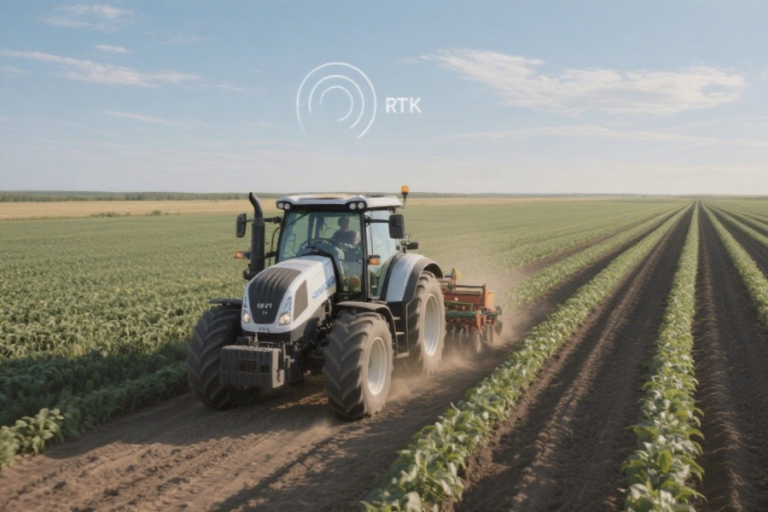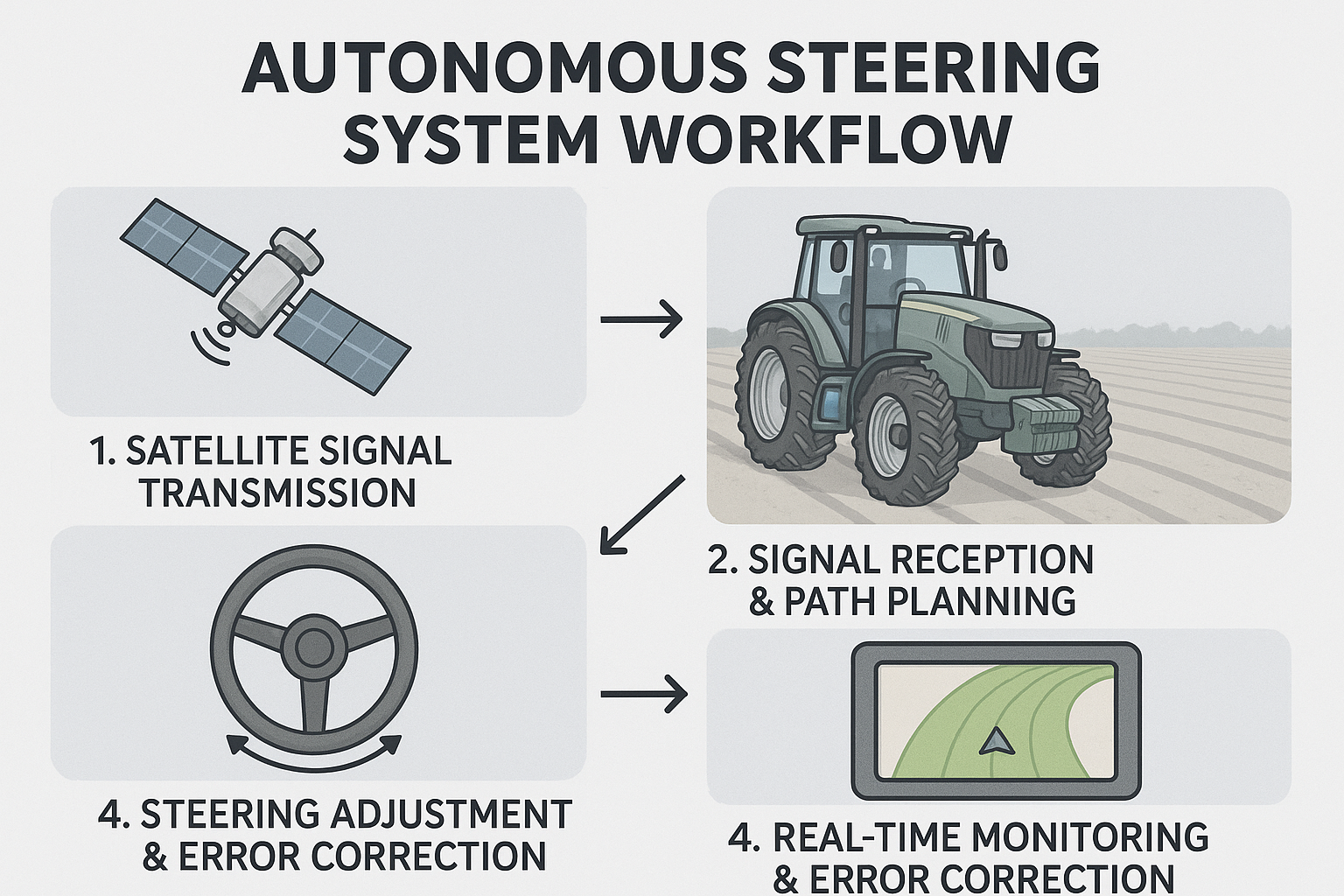Introduction
With the rapid development of agricultural automation, more smart equipment is being used in field operations to improve efficiency and precision. Among them, the auto steering system plays a vital role in precision agriculture. It uses GPS navigation agriculture technology and control systems to guide tractors automatically. This system greatly reduces manual labor and enhances operational consistency.
What is Tractor Auto Steer?
Auto steer system guides a tractor along a preset path using GPS or RTK for precision positioning. This automatic steering system includes a GPS receiver, control terminal, steering mechanism, and actuator. Its main function is to improve straight-line driving, reduce overlap or skips, save fuel, and boost fieldwork efficiency. Auto steering system is different from autonomous driving, as it only manages direction, requiring operator supervision, while autonomous driving includes speed control and obstacle avoidance.
Core Components of an Auto Steering System
- GPS/RTK Antenna and Receiver: Receives high-precision GPS signals or RTK corrections for positioning.
- Controller and Monitor: Processes signals, sets work paths, and displays live data.
- Hydraulic or Electric Steering Actuator: Controls the steering system, executes turning commands.
- Sensors and Navigation Modules: Track position, direction, and adjust path deviations.
These components work together to deliver reliable GPS navigation agriculture performance.
How Does a Tractor Autosteering System Work?
A tractor autosteering system will receive satellite positioning signals, plan routes and control the direction to guide a tractor automatically. The entire process includes these steps:
Signal Reception and Positioning:
The system first gathers real-time tractor location information from satellite navigation systems like GPS or BeiDou. If RTK technology is used, it also receives correction signals from ground base stations, achieving centimeter-level accuracy.
Path Planning:
The operator inputs the desired route or field boundary into the control terminal. The system then calculates and plans the route based on selected operation modes, such as AB lines, spiral patterns, or curves.
Steering Control and Automatic Correction:
If the tractor deviates from the planned path, the navigation system identifies the deviation. The tractor’s steering direction is then automatically corrected through an electric-hydraulic system or an electric steering wheel actuator, ensuring it returns to the intended track and maintains a straight or curved path as set.
Continuous Monitoring and Adjustment:
Throughout operation, the autor steer system continuously monitors position and operational status, automatically adjusting the route to accommodate changes in terrain or correct any deviations, ensuring precise operation.
Types of Tractor Auto Steering Systems
- Lightbar Guidance Systems: Entry-level. Operators follow LED light cues to steer. Low cost, manual correction.
- Electric Steering Wheel Systems: Adds a motorized wheel. Auto-controls steering. Easy to install, ideal for upgrades.
- Hydraulic Steering Systems: Directly integrates with hydraulic lines. High response speed, accurate, for large-scale machines.
Is Auto Steering Worth It? Cost vs Value
Initial Investment:
Lightbar: $500–$2,000
Electric steering: $3,000–$7,000
Hydraulic: $8,000–$20,000+
Factory-integrated: highest cost, best performance
RTK Subscription Fees: $500–$1,500/year, depending on provider. Free lower-accuracy signals available.
Benefits and ROI:
Save fuel and labor (5–10% savings)
Improve spraying and seeding accuracy
Reduce fatigue, increase safety and efficiency
Operate at night or in poor visibility
Most users recover the cost within 1–3 years through better efficiency and reduced waste. For medium to large farms, the auto steering system is a smart investment. Small farms can start with entry-level systems and scale up.
Conclusion
Auto steering systems are becoming standard in modern agricultural automation. They enhance efficiency, reduce costs, and support sustainable farming. Whether you’re seeding, spraying, or harvesting, these systems deliver high-precision results.
If you’re planning to upgrade your equipment, explore our JHXH001 Auto Steering System. With 2.5cm accuracy, multi-machine compatibility, and proven results worldwide, it’s the ideal solution for your farm.
Start your journey into precision agriculture today.[Contact us now] to learn more.





